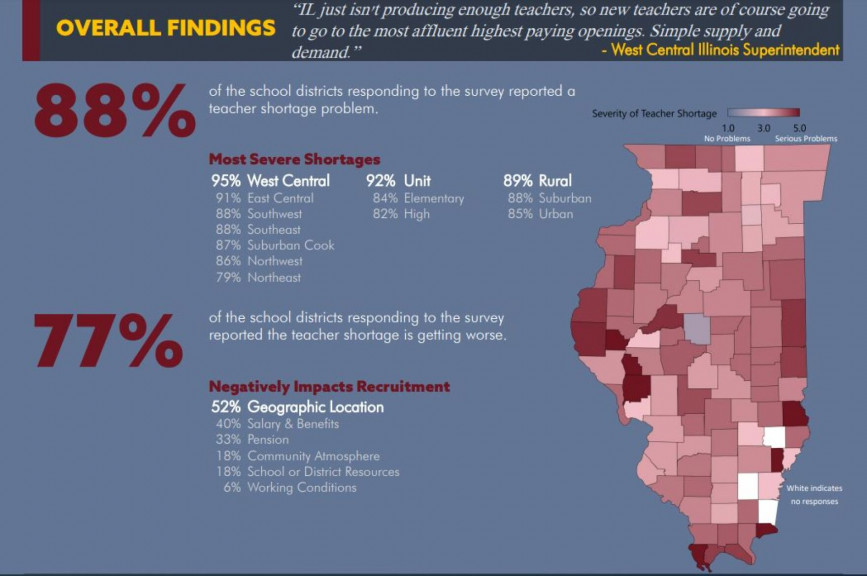Get the latest news: Subscribe Now
This insightful and informative selection is brought to you through WMAY with and by the wonderful work, determination, and generosity of Capitol News Illinois.
By David M. Ardrey

David M. Ardrey is the executive director of the Association of Illinois Rural and Small Schools and president of the National Rural Education Association. He may be reached at execdir@airssedu.org.
No matter what report you read, the teacher shortage has gone from what we at the Association of Illinois Rural and Small Schools (AIRSS) were discussing in 2015 to the harsh reality in 2023. In 2015, a little more than a year into my new role as executive director of AIRSS, many of the meetings I attended with superintendents in some way addressed teacher shortages. Moreover, rural schools started to experience more than the normal one-off vacancies and were seeing a significant decline in the availability of all applicants, with openings primarily in the content areas of math, science, and English.
My efforts to express this concern with state and agency stakeholders were seemingly disregarded, in part, because these shortages were not as prevalent in the larger more affluent districts. Not surprisingly, rural districts and schools have faced challenges retaining good teachers due to (1) low teacher salaries, (2) low school funding, and (3) a lack of needed resources to support equitable learning.
Significant data exists to substantiate the rural teacher shortage. In November 2016, the National Governors Association (NGA)convened a diverse group of Illinois education stakeholders to draft the first comprehensive report on teacher shortages in Illinois. This report was a concise assessment of many factors that contributed to the teacher shortage and shared specific recommendations for rural and small schools. One recommendation was the initiation of a pilot to establish Rural Teacher Corp programs. The NGA report was released in October 2017.
That same year, the Illinois Association of Regional Superintendents of Schools (IARSS) released its first of what is now an annual report on the teacher shortages. AIRSS was one of the first supporters of this report through a partnership with Southern Illinois University-Carbondale.
As predicted, much of the data captures the reality of our rural and small schools and the challenges they encounter. Unfortunately, the teacher shortage in rural schools is not a one–issue problem as shared below.
Teacher salaries in Illinois rural and small schools are some of the lowest salaries in K-12 public schools. In 2023-24, state law went into effect setting a minimum salary of $40,000 for teachers. But even with this effort, educators in rural and small schools will receive salaries well below their urban and suburban counterparts.
Low school funding will continue to play a role in the teacher shortages in rural and small schools, as Evidence-Based Funding is predicted not to reach equitable funding for another 20-plus years.
Even though the educator pipeline in Illinois has received increased attention in recent years, these solutions are not focused on the unique needs associated with rural schools. Consequently, the lack of candidates in the pipeline will remain a significant threat to staffing rural classrooms for the foreseeable future.
Now as we start 2023, very little has been done to specifically address the rural teacher shortage. As we have advocated since 2016, and called out in the NGA report, a state-funded and supported statewide Rural Teacher Corps program is a step in the right direction. It is designed to encourage students to teach in rural schools, and by design, it supports the retention of educators in these rural schools. The program mirrors the success of programs like Golden Apple and Teach for America but is solely focused on rural schools.
A final thought – the teacher shortage seems eerily similar to previous issues facing rural education – we have some of the answers, we have made recommendations. It just seems to be a lack of support and political will to address the problem.





